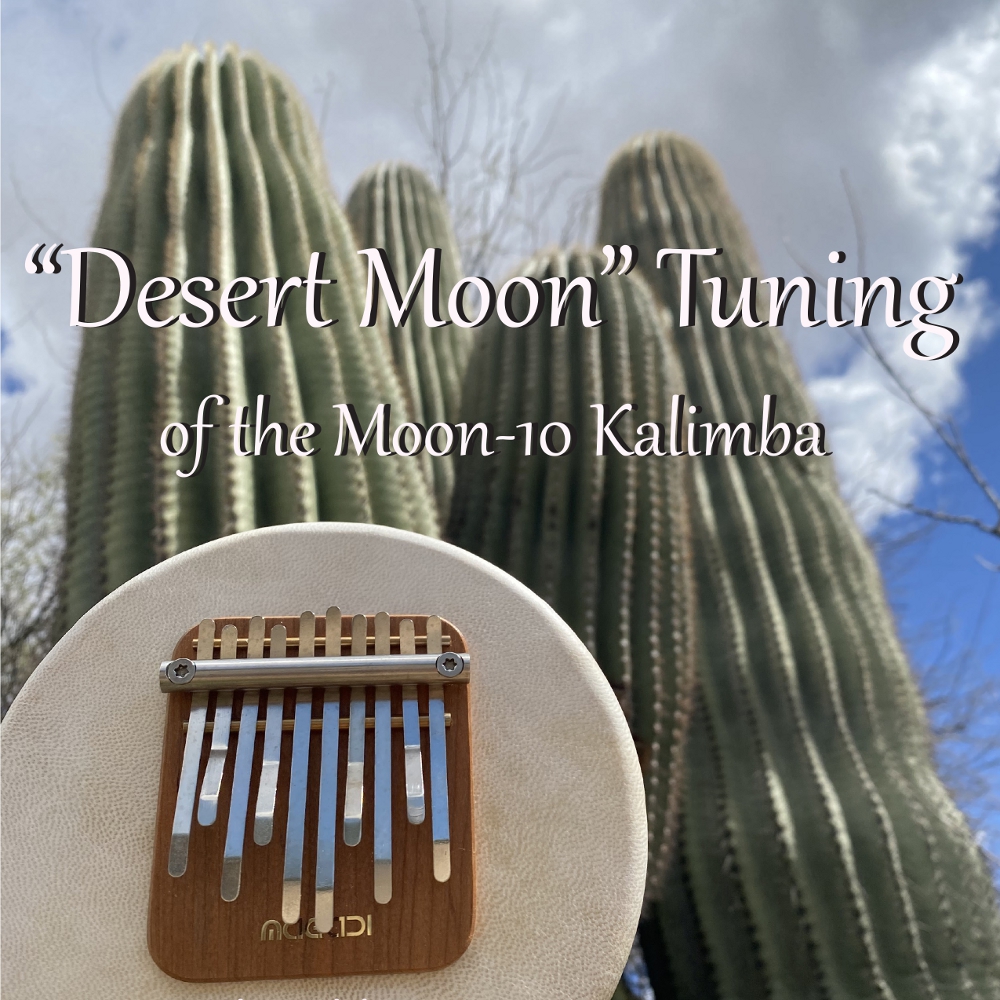
Use of this website constitutes acceptance of the Privacy Policy and User Agreement. Copyright © 2020 Kalimba Magic. All Rights Reserved.
The Afroharp is a legendary 13-note, two-level kalimba created and manufactured for only a short period in late 1960s Chicago. This instrument plays sweet, hauntingly beautiful, harmonic music, and the Afroharp’s particular tuning is at the heart of the music it makes.
The Afroharp is gone, with only a few floating around in the world. But Kalimba Magic has started building instruments in the Afroharp tuning, made from Hugh Tracey Alto kalimbas with electronic pickup – just as the original Afroharp had a connection for a “high impedance dynamic microphone”, as you can see if you check out the fascinating manual included with new Afroharps back in the day, in the archived newsletter article “Afroharp Article #2” in the links below this post.
We are happy to offer Playing the Afroharp, a 46-page instructional book with downloadable sound files along with many songs in kalimba tablature.
The Afroharp lends itself to playing some pretty cool music, and I am glad I got the chance to focus on this instrument, get to know it well, create exercises and music in the writing of this book. The music you hear in the background is one of the songs from the book, played on an Afroharp-tuned Hugh Tracey Alto kalimba. The tablature for this song is shown below. If you have always thought that kalimba tablature was too complicated, this is a good example of tablature that you should be able to make sense out of. Start on the lower left, and with each note you hear playing in the recording, move one note higher on the page and anticipate the sound of that note. Can you correlate the patterns of the played notes with the geometrical patterns on the tablature? Sure you can!

The tablature diagram shows one page of the song you hear playing in the background. Click to download the full two-page PDF.
The first column of tablature shows one part, which is played entirely on the lower row tines (depicted in white). This part starts on the right side of the column, plays the same motive (also called motif, a short musical idea or theme) four times, then makes the mirror image of that motive on the left side, also played four times. That entire first column of tablature repeats (the double line at the top with two dots below it is a repeat symbol). The second column of tablature (on the right side of the diagram) adds another part on the upper row tines (upper row depicted in gray). The upper row tines are played with the thumb that is not playing the lower row tines. In measures 13-16, your left thumb is playing the lower row tines on the left side, and the right thumb plays the upper row tines. Often the right thumb will have to reach to the left of the center line to play the upper tines.
This is a great example of the kind of music the Afroharp makes easy. My editor says that the music playing in the background, despite being an “exercise”, is a compelling and emotionally evocative little song. Minimal expertise going in, delightful sound coming out. To possibly overemphasize this point, here is a true-life story that supports her feelings:
I have friends who don’t play kalimba. My friends are naturally subject to a lot of kalimba exposure (just being near me), and they have probably sat with a few kalimbas in their hands, trying them out, playing around – and nope, they were not natural-born, instant kalimba players. But when they picked up a kalimba in Afroharp tuning and messed around, it seemed to engender a change of heart: “Wow, if even I can make this sound wonderful, then anyone can make cool music on the Afroharp!” said one.
And it’s true – more than the typical kalimba, you just pick it up, stroke it gently, and it will purr for you.
What is it about the Afroharp tuning that is so special? You can see the tuning in the footer of the tablature above, and you can’t miss the duplication between rows – any note present on an upper tine is also present on its adjacent lower row tine. The exception is the center E tine. The longer, lower row tine of a duplicate pair will play a lower version of the note, and the adjacent upper row tine will play a higher version of that note, exactly an octave (8 notes) apart. When you play them together, you are playing “in octaves”. Playing in octaves has the effect of sounding very strong.
Try sliding your thumb nail gently off an upper row note, and then catch one of the adjacent lower row notes. If you don’t slide outward to get the octave, but slide inward (from the high D to the low B, for example), the harmony is still pleasing. In fact, the Afroharp is really all about harmony.
Another aspect of the Afroharp tuning that is essential to its music is that it is missing the F note. This enables us to play equally well in the keys of C, G, A minor, or E minor, affording lots of flexibility. Also, the missing F means we avoid the possibility of playing E and the F at the same time – that is, without the potential of inadvertently playing this half-step interval between E and F, this tuning walks you away from a huge dissonant pitfall. The F note’s absence removes the opportunity to play something that sounds bad, and we are freed up to just have fun, relax, and make something good happen with the music.
In sum, the Afroharp is a different animal entirely: the octave pairs on the high and low tines, plus the missing F, present a totally new harmonic landscape to us. This can shake us up and out of the rut of what we thought kalimba music was about, and we are free to discover a new kind of music in the notes the Afroharp gives us.
Consider the Afroharp book to be a beacon lighting the way for your own explorations into this strange and wonderful kalimba tuning.


Sign up for our newsletter and free resources with your email address:
We pinky promise not to spam you and to only send good stuff.
 66 Songs for the 17-Note Kalimba in C
posted on July 18, 2018
66 Songs for the 17-Note Kalimba in C
posted on July 18, 2018
 Chords on the 17-Note Kalimba in C
posted on June 21, 2019
Chords on the 17-Note Kalimba in C
posted on June 21, 2019
 How to Tune the Kalimba
posted on November 20, 2020
How to Tune the Kalimba
posted on November 20, 2020
Use of this website constitutes acceptance of the Privacy Policy and User Agreement. Copyright © 2020 Kalimba Magic. All Rights Reserved.